Interesting things from the last week
Pomelo salt, porcini, damsons and hyssop in no particular order
It was the smell that first caught my attention as I walked over the worn stone slabs of the old market square here.
A small old village that stands on the early reaches of the banks of the river Thames, deep in the Oxfordshire countryside. There has been a marketplace here since the thirteenth century though I doubt they sold exotic fruits here back then. What’s more, there is a pub here from 1325, soon to celebrate its seven hundredth year. The history nerd in me never fails to be impressed by this sort of thing. That crossover in time, the then and now still linked by the old brick walls in the marketplace that stands around us, old doorways studded with iron nails and the stones beneath our feet. And that very old pub with a sloped floor, whose walls could tell you stories if you could only hear them.
Citrus Maxima or Pomelo
I’d almost forgotten it was that time of year, nearly winter. Time for citrus fruits.
Then that smell, pervasive and intense, stopping you in your tracks.
Like a citrus gong being rung in my head.
Scrape a fingernail into the smooth yellow skin, rub it a little, releasing the oils and you’ll immediately see what I mean.
So deeply intense that I bought half a dozen from the stall.
The fruit inside, once peeled from its fragrant yellow rind, inch-thick pith and dry membrane, is coloured a muted pink. The tiny vesicles squeezed together forming perfect segments. Dry but curiously juicy and very addictive.
I spent the best part of an afternoon making salts on Thursday. A pomelo and lemon leaf coarse salt was first.
C says that it would be marvellous for margaritas. I agree.
The pomelos torn open, I love their structure, the yellow rinds peeled ever so thinly then chopped into the salt. The segments removed from their papery pith, pink and tightly packed with structure, pulled apart and rubbed into the zest and the salt, becoming sticky with the juice, before spreading on a tray and leaving to bake very slowly in the warmth of the drying oven.
I’d cut away a handful of verdant green leaves from a lemon tree to put into the dehydrator to add to the mixture. I often use citrus leaves, lemon in particular, they have that unmistakable green, citric freshness. I wanted to see if they would remain as pungent after dehydration. They did, so I crushed them into the pomelo mixture, a jumble of pale pink flesh, the lush green of the leaves, gold and green rinds, the bright white salt that bites into the forgotten small cuts on my hands as I scrunch everything into a neat pile on a piece of parchment, rubbing it between the palms of my hands to crush it before pouring it into a jar, twisting the lid tightly, the aroma redolent of grapefruit, lemons and citrus oils.
Damsons
Damson salt, as it’s now pheasant season and it would be silly not to have something deep in colour, sweet but salty at the same time. I dry it slowly, picking up handfuls as it desiccates, crushing it between my fingers. I’ll leave it coarsely textured so there are tiny pieces of dried fruit along with the crystalline textured salt flakes, deeply purple. Dried plums, white salt stained in clumps where the juice seeps from the flesh of the little wild fruits picked from the trees in the fields.
And then there is damson gin.
Of course.
Hyssop.
The hyssop bush grows in a lichen-covered stone urn standing on the edge of a set of time-worn steps. Smooth now from hundreds of years of ups and downs. Scuffed and rubbed away by long forgotten shoes.
Tall and woody-stemmed at its base so it’s tricky to pull out, the sticks changing to softer green stalks that stand proud, flowering a pinkish purple, a heady fragrance of mint, phenols and what I think is slightly of thyme. I suppose that comes from its antiseptic qualities. I use both the bright flowers and small pointed dark green leaves in many different ways throughout the year. As an ingredient in a composed salad, crushed over a plate of raw sea bass, before dressing with oil, salt and citrus juice. It provides an unusual flavour profile. As its flowers have faded to a dull grey, we cut it and leave it to dry, preserving its pungency for another day. Again, the skin on my fingers burns as I crush great handfuls of the dried leaves and flowers into piles of flaked sea salt. Pots of warm fragrant herbs in salt, prepared for the end of the year.
My larder of flavours that I use to make things taste a little different are characteristic of what grows here, both wild, foraged and cultivated.
Smoked
A large chunk of salmon is to be prepared for hot-smoking. I use a sharp knife to cut a slice through the skin exposing the muscle structure beneath, rubbing in a mixture of pomelo salt, sugar and lemon leaves, before leaving for a day and a night so the crystals melt down into a sweet, aromatic brine, rinsed off and the fish left to dry.
I start a fire with twigs of dry apple wood that have spent the last year drying in a quiet corner of the orchard, before laying fresh thyme on top of the smoking embers. A small bushel of thyme pulled out of a nook between old stonework, still in flower, bright pink and green, adding a great whoosh of smoke as it starts to ignite, controlled to a slow burn by shutting the vents on the smoker. The piece of salmon is placed inside on a metal rack before closing the lid and letting the smoke work its magic, only removing it when its juices come to the surface, ensuring it’s a blushed pink throughout, before leaving to cool, letting the smokiness calm a little. Pulled apart along the lines of the muscles, warm and stained with the smoky oils.
Citrus, salt, sweetness and smoke.
Mushrooms
A hen of the woods mushroom has popped up from the ground, seemingly growing out of the grass, though more likely on the root of an old oak tree buried beneath the earth. Although tempting to cut, it’s best left for another day or two to see if indeed it will grow as the damp weather continues. I move a wrought iron bench over the top of it. Protection from the misstepped feet of a giant Great Dane that might come bounding through here.
I plan to cook it for lunch another day.
And then there are what you’ll know as Penny buns, ceps or porcini, depending on where you live. Some the size of your hand, untouched by the flies, and as yet clean from the larvae that will come and burrow into the base, spoiling the mushroom. Handfuls of ceps, some cut for drying, others for a carpaccio, some for roasting. The dry porcini from the shops is nothing compared to the flavours I have here. A jar of small crisp slices, to be added to braises and stocks, ground into powder and used to season meat. We used to rub the powder from dried porcini onto thick pieces of veal sweetbreads and stud them with slivers of black winter truffle, before roasting them till crisp in foaming butter. We’d serve them sliced with braised young lettuce and candied shallots, cooked for hours in sugar and butter so they glistened and almost melted away, and a deeply rich sauce that now I forget what it was.
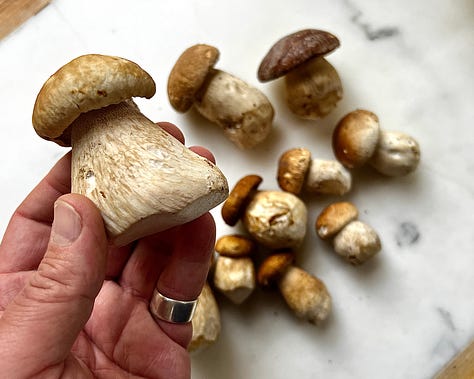
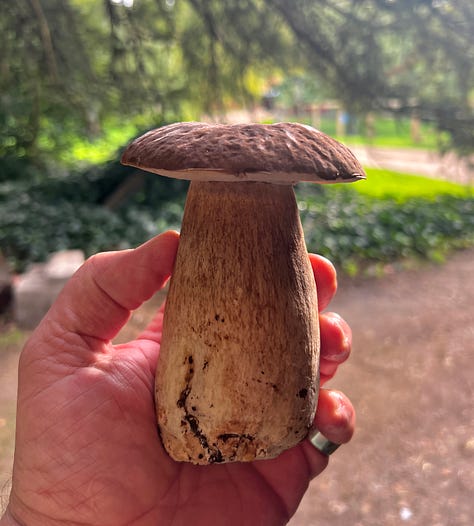
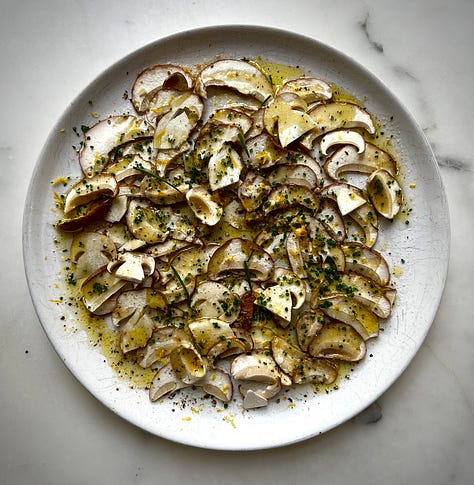
I will use a handful of the dried ceps in a pheasant consomme in the coming days. I’ll use aniseed, bay and golden roasted onions, along with celeriac peel and strips of orange zest. It’ll cook for the best part of a day, rich and deep brown, the peppercorns softened as the bones yield their goodness to the broth.
I’ll clarify it so it is crystal clear, shining and gold.
I will show you that when the weather gets colder.
And my technique for creating persimmon vinegar as I promised you last week, will be in my next newsletter.
Definitely.
Until Thursday,
William




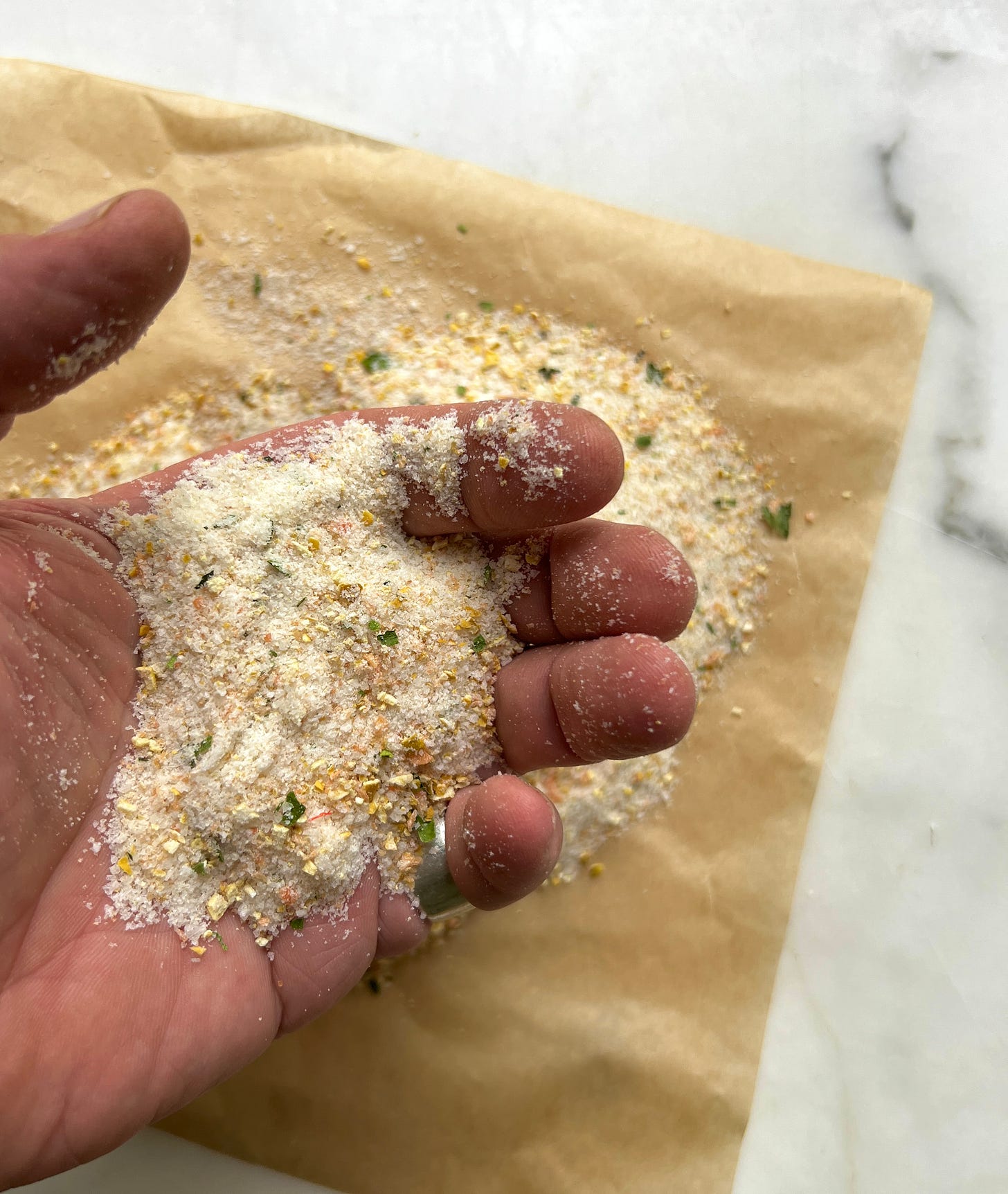
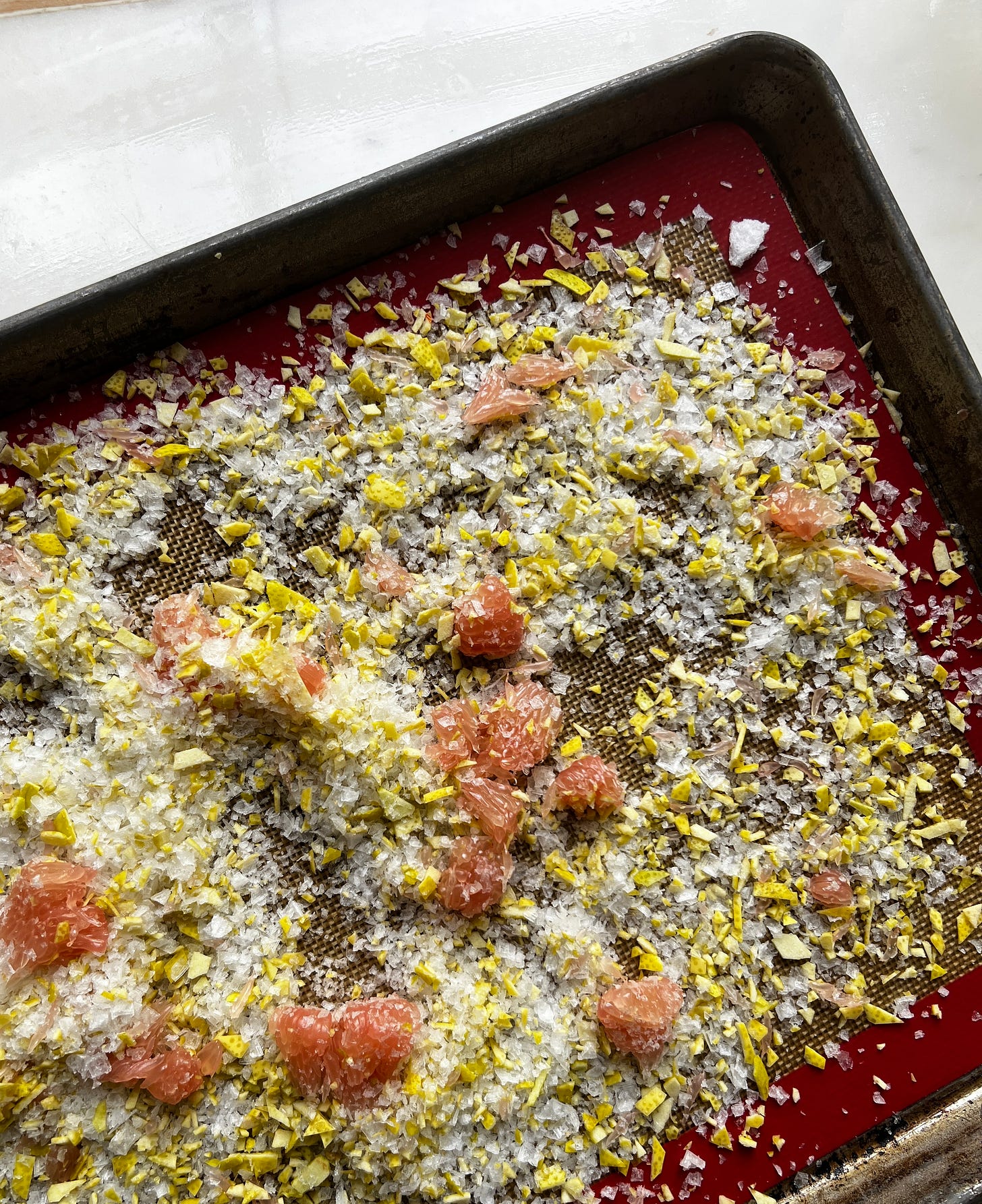
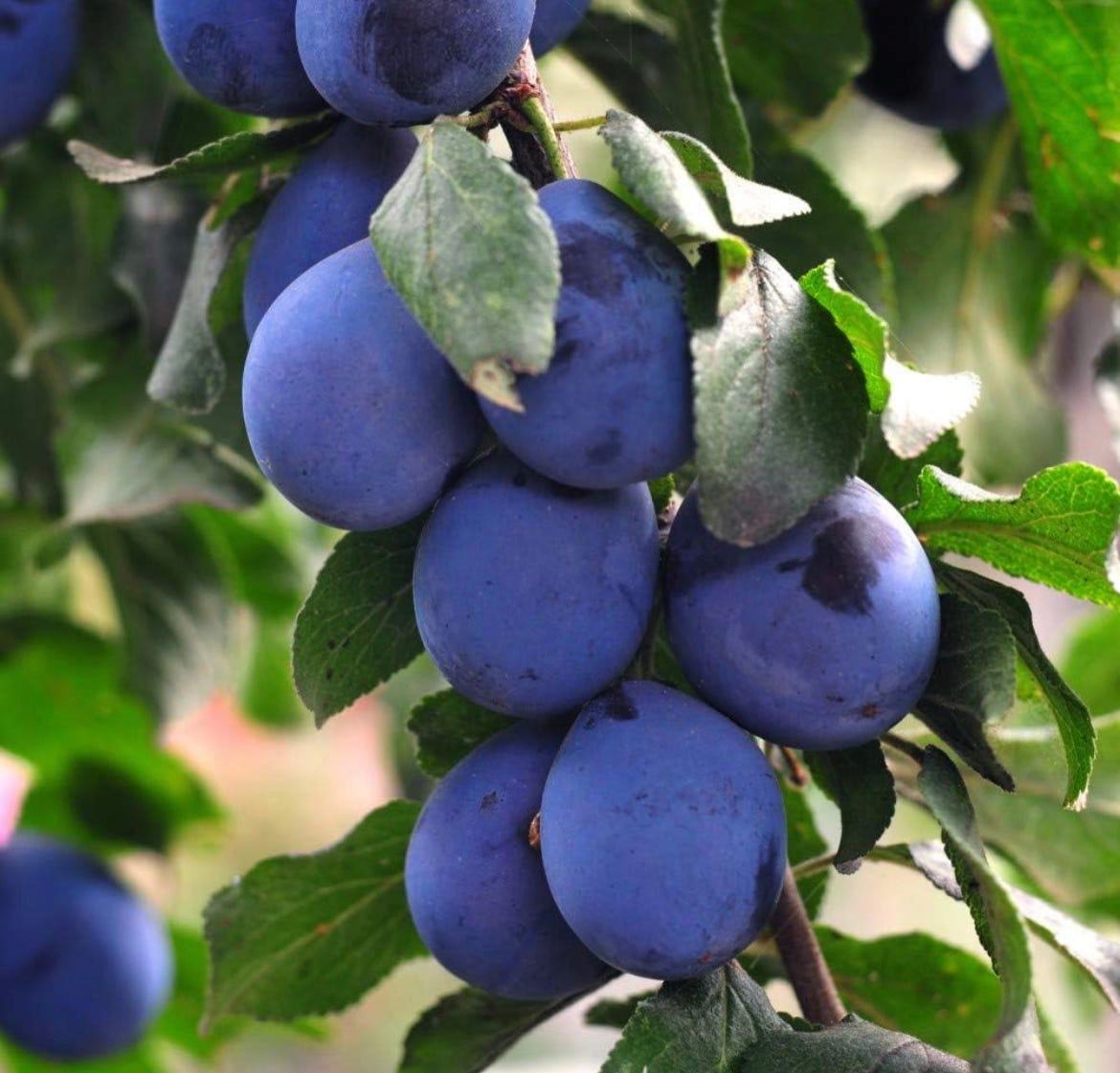
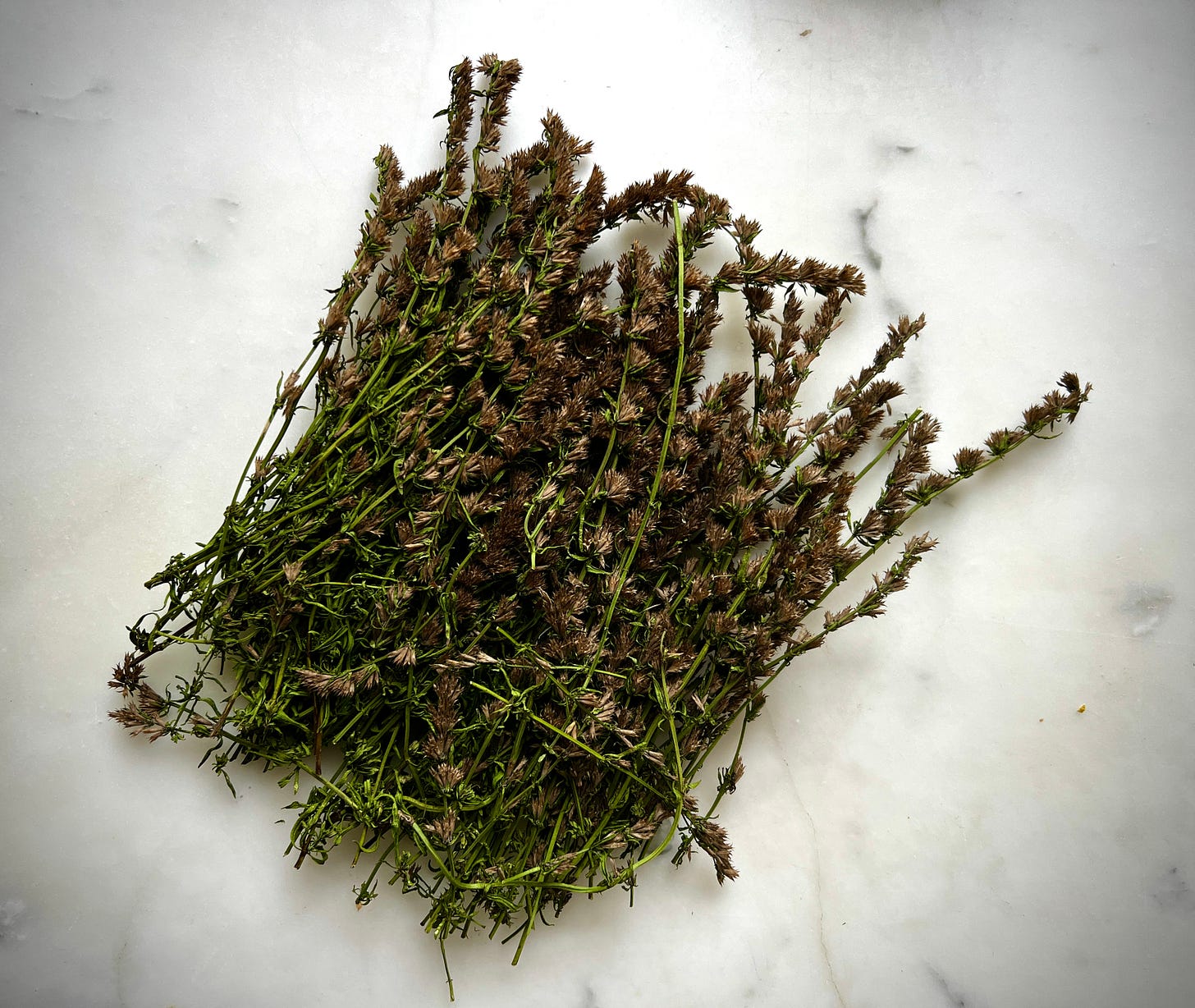
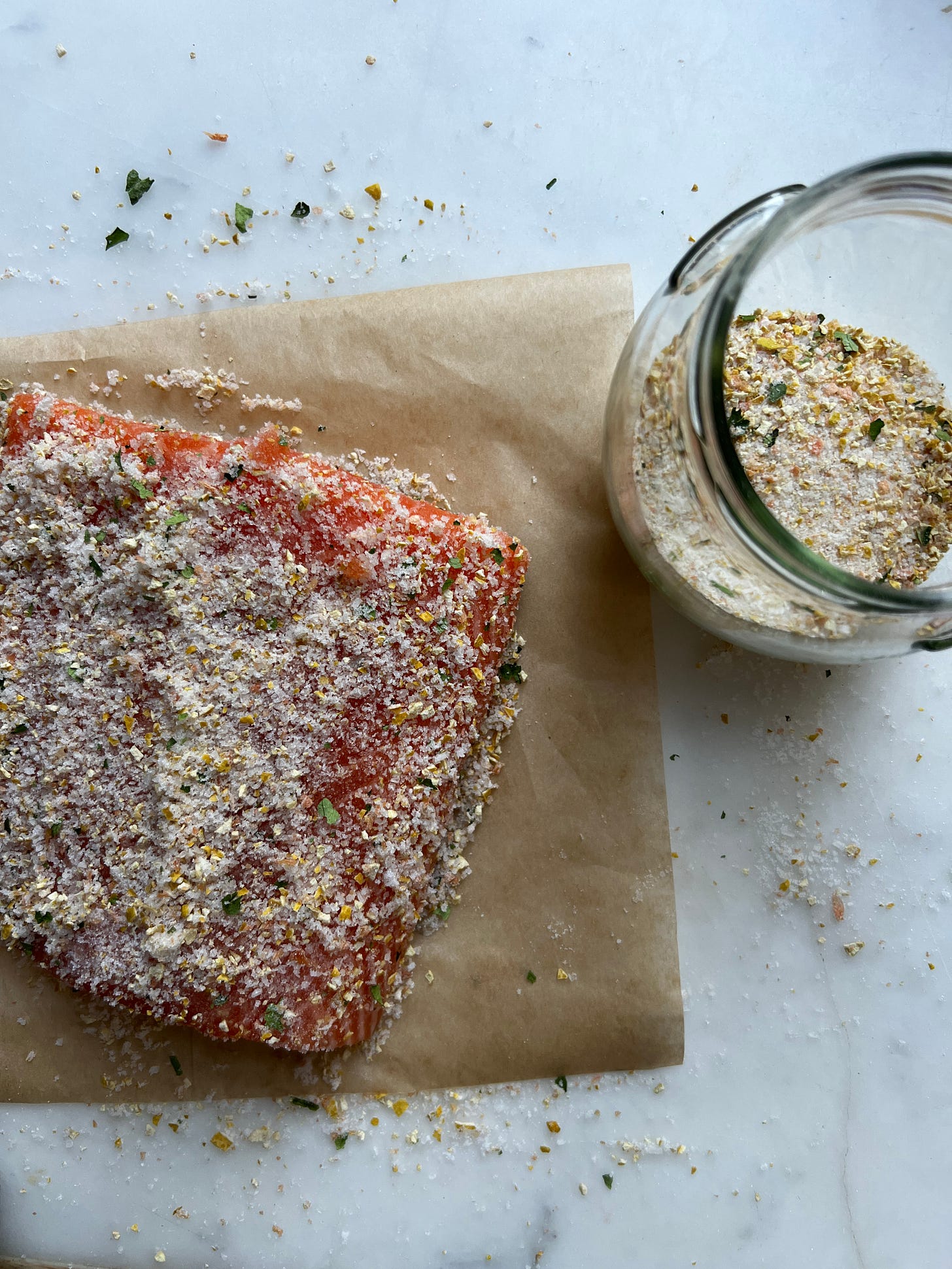
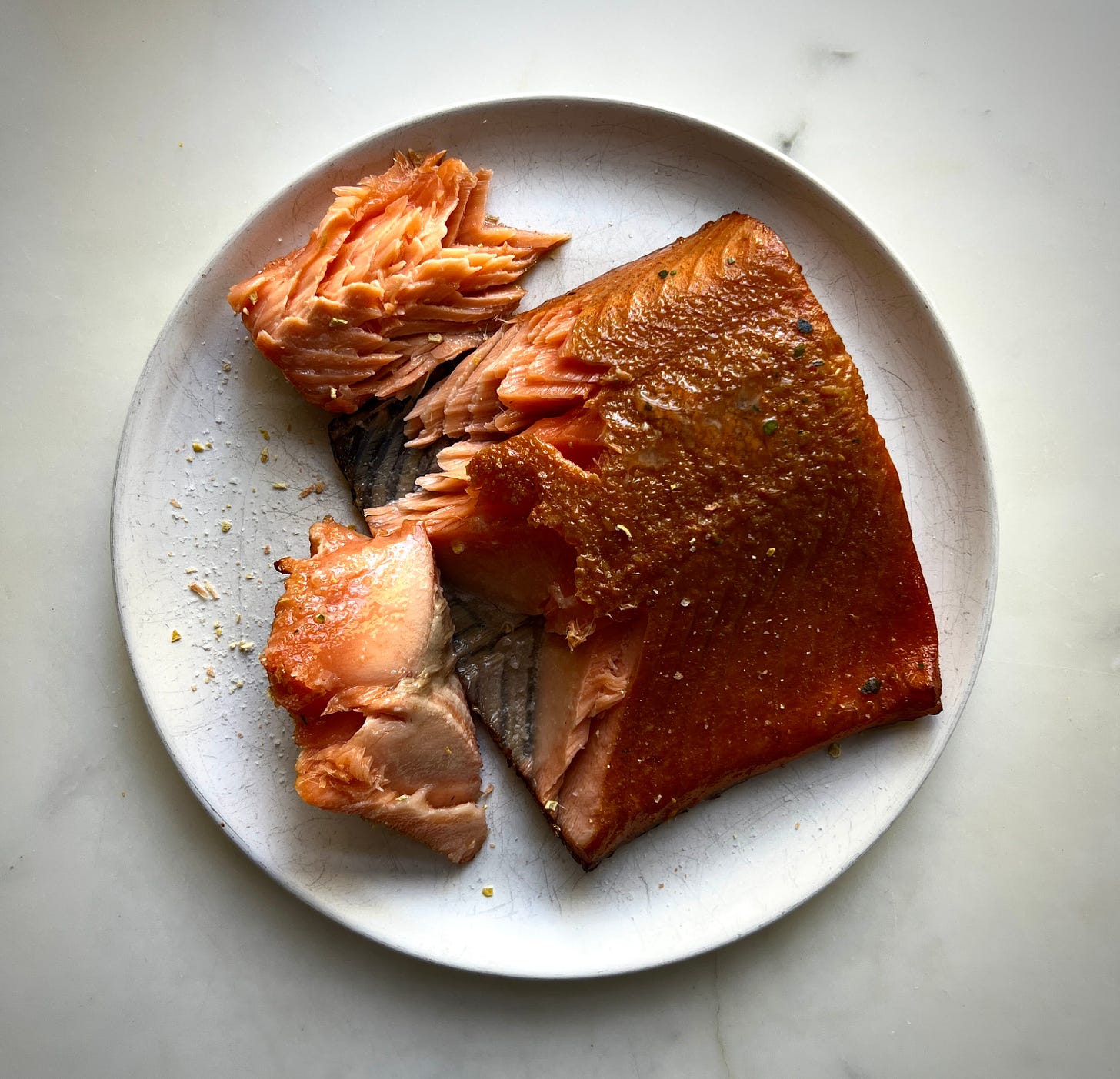
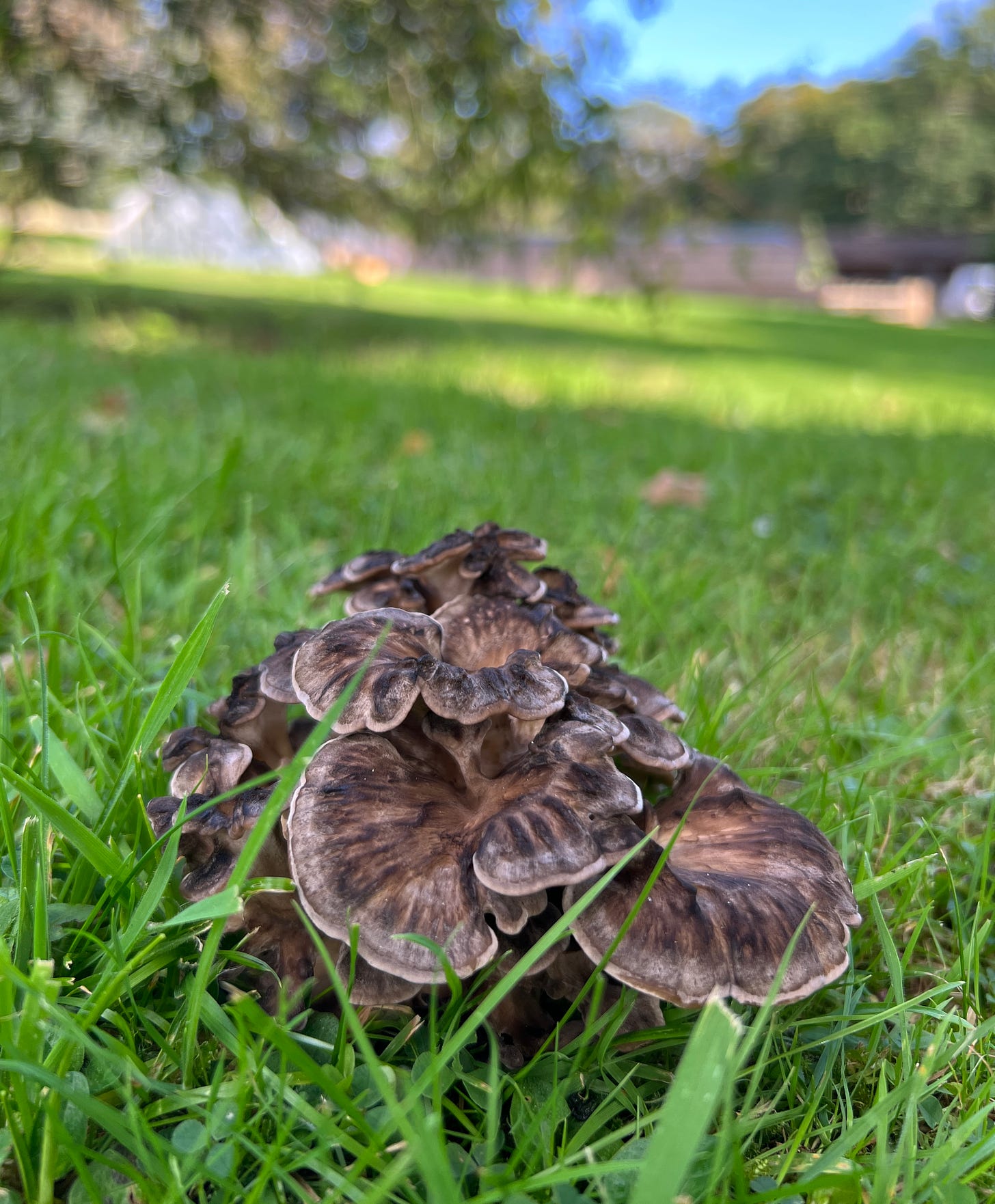
The salt ideas are interesting...I've made a citrus salt in the past, and it was spectacular. Unfortunately, I always seem to forget making these wonderful condiments...so thanks for the reminder!
I would follow you around the grounds and kitchen for a week like an eager puppy waiting for scraps (of what your hands and nose and eyes know of the ready texture, the right scent, the ripe color) to fall. There is at once an ancient-modern flare to your culinary mastery.